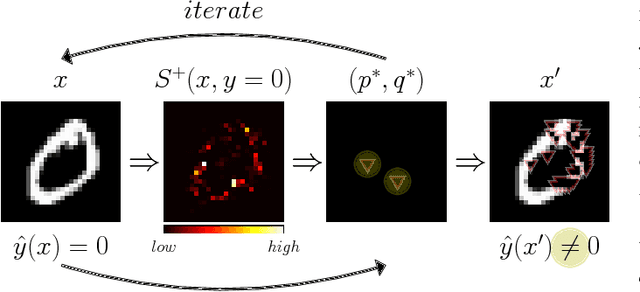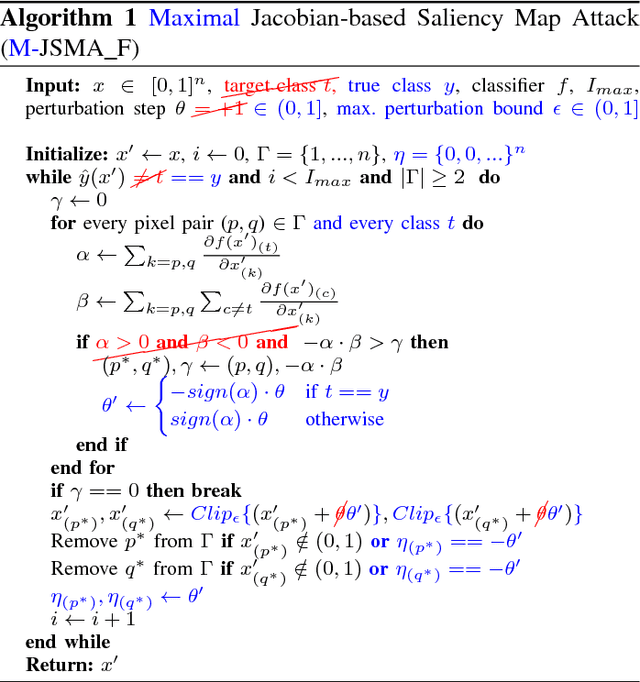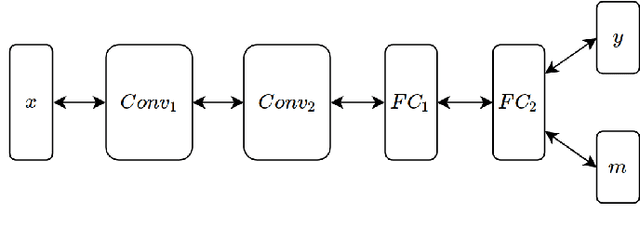Rey Wiyatno
Maximal Jacobian-based Saliency Map Attack
Aug 23, 2018



Abstract:The Jacobian-based Saliency Map Attack is a family of adversarial attack methods for fooling classification models, such as deep neural networks for image classification tasks. By saturating a few pixels in a given image to their maximum or minimum values, JSMA can cause the model to misclassify the resulting adversarial image as a specified erroneous target class. We propose two variants of JSMA, one which removes the requirement to specify a target class, and another that additionally does not need to specify whether to only increase or decrease pixel intensities. Our experiments highlight the competitive speeds and qualities of these variants when applied to datasets of hand-written digits and natural scenes.
Style Memory: Making a Classifier Network Generative
Mar 05, 2018



Abstract:Deep networks have shown great performance in classification tasks. However, the parameters learned by the classifier networks usually discard stylistic information of the input, in favour of information strictly relevant to classification. We introduce a network that has the capacity to do both classification and reconstruction by adding a "style memory" to the output layer of the network. We also show how to train such a neural network as a deep multi-layer autoencoder, jointly minimizing both classification and reconstruction losses. The generative capacity of our network demonstrates that the combination of style-memory neurons with the classifier neurons yield good reconstructions of the inputs when the classification is correct. We further investigate the nature of the style memory, and how it relates to composing digits and letters. Finally, we propose that this architecture enables the bidirectional flow of information used in predictive coding, and that such bidirectional networks can help mitigate against being fooled by ambiguous or adversarial input.
 Add to Chrome
Add to Chrome Add to Firefox
Add to Firefox Add to Edge
Add to Edge